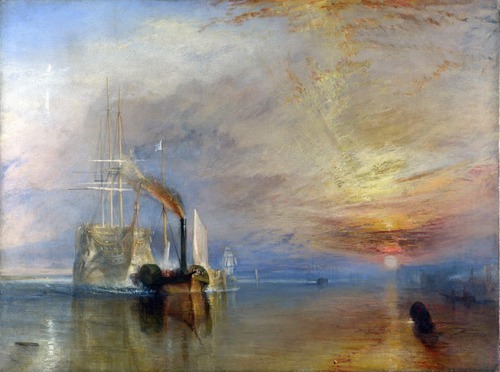“Cyberspace & Skyfall”
Recently, I watched the new James Bond movie “Skyfall.” One specific scene (please see attached video clip) reminded me of the book my cohort and I are reading for our doctoral program; and particularly chapter 8 “In and Out of Cyberspace.” The book is called A Social History of the Media: From Gutenberg to the Internet by Briggs and Burke. In the attached video clip Bond and Q are discussing a painting of a ship called “The Fighting Temeraire Tugged To Her Last Berth To Be Broken Up, 1838, by JMW Turner, 1839, National Gallery of Art, London.” (thefineartdiner) The symbolism and conversation refer to the old ship, the old ways of doing espionage, as opposed to the new way with a computer in your pajamas, as Q puts it. There is no doubt that the emergence of the internet has immensely changed society and the way we do life. Briggs and Burke state, “Cyberspace is a word which passed into general use during the 1990s via the Internet, but long before then a writer in Harper’s Magazine, C.R. White, had predicted in 1938 that technology would soon encroach on the ‘territory of the real.’ Clearly the race today is…between the things that are and the things that seem to be.” (pp. 276-77) We have begun questioning the reality of things; not just abstract philosophical concepts but the physical world. Where is the dividing line between the “real” and the “virtual?” Bond seems to express that although one can certainly learn things about espionage from the virtual world, wisdom to know when and when not to pull a trigger can be learned only in the physical world. There is boundless knowledge in cyberspace but we put that knowledge to work by testing it in the real world. Several questions that come to mind when I think about cyberspace, the history of media and the timeline shared in this text. How do we discern the real and virtual worlds? What is the dividing line or boundary between the two?
In relation to theology we might look at the real and virtual as the physical and spiritual realms. When is the physical spiritual and when is the spiritual physical? How do the changes in technology affect theology? The virtual world of technology has become a parallel universe for some individuals. Does the spiritual realm become more real if it is viewed as a parallel universe? How might this concept affect the modern mind? How do the stories from ancient sacred texts fit in these real and virtual worlds?
The old ship in Skyfall represents a way of doing life in a different time. However, I think the old ship carries with her invaluable lessons. Just because she is rusty and her ways are outdated does not mean that she doesn’t bring the ancient wisdom that will forever be needed as long as humankind walks the Earth. The universal lessons are forever. How they are communicated and lived changes. Perhaps, this is a clue to how the ancient wisdom flows from one generation to the next. The wisdom must stay intact but its carrier morphs and changes; sometimes from the real tactile world to the virtual parallel one.

Briggs, Asa and Peter Burke. A Social History of The Media: From Gutenberg to the Internet, 3rd ed. Polity Press, Massachusetts, 2009.
http://moviesblog.mtv.com/2012/10/22/james-bond-q-skyfall-clip/
http://thefineartdiner.blogspot.com/2012/11/skyfall-englands-greatest-painting.html
Leave a Reply
You must be logged in to post a comment.